Aug 24, 2009
Olympus Stylus Tough 6010 Review

Here’s my review of the Olympus Stylus Tough 6010 aka Mju Tough 6010, a compact and rugged camera from Olympus with tap control. Along with the review, I’ve got the Olympus Stylus Tough 6010 photo gallery posted as well.
DPInterface Olympus Stylus Tough 6010 aka Mju Tough 6010 Review
Brad Soo – August 24th, 2009 (Updated August 25th, 2009)
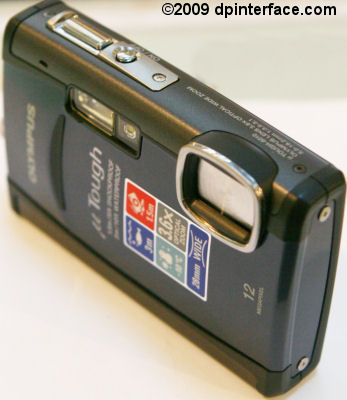
The Olympus Stylus Tough 6010 is the 12 megapixel almost-identical twin of the Stylus Tough 6000 that I reviewed earlier this year. In addition to the up in megapixel count, the Stylus Tough 6010 also adds four Magic Filters (something like Art Filters on Olympus’ digital SLRs) and comes in three new colors. But other than that, everything else remains the same.
With a different sensor used in the camera, is the Stylus Tough 6010 any better than its 10 megapixel twin? Find out now!
The Olympus Stylus Tough 6010 is also known as the Olympus Mju Tough 6010 in some parts of the world. Since the Stylus Tough 6010 and Stylus Tough 6000 cameras have so much in common, excuse me if I recycle some text from the latter’s review in this article.
Size and Weight
(219.3) 103.6 x 66.9 x 48.8 mm (190 g) – Canon PowerShot D10
(172.2) 92.0 x 59.6 x 20.6 mm (110 g) - Fujifilm FinePix Z33 WP*
(177.0) 96.5 x 60.5 x 20.0 mm (140 g) – Nikon Coolpix S70**
(181.1) 95.3 x 63.4 x 22.4mm (149 g) – Olympus Stylus Tough 6010
(178.2) 95.0 x 61.7 x 21.5 mm (182 g) – Olympus Stylus Tough 8000
(176.8) 93.6 x 61.7 x 21.5 mm (127 g) – Olympus Stylus 550 WP*
(184.4) 98.3 x 63.1 x 23.0 mm (163 g) - Panasonic Lumix TS1 aka Lumix FT1
(180.0) 99.5 x 56.0 x 24.5 mm (135 g) – Pentax Optio W80
(172.0) 97.9 x 57.8 x 16.3 mm (124 g) – Sony Cyber-shot T900**
All the weight figures above show when the camera is empty without a battery or memory card
*Waterproof only
**Non-rugged camera
Not surprisingly, the Olympus Stylus Tough 6010 aka Mju Tough 6010 has exactly the same dimensions as its 10 megapixel twin. The camera winds up in the middle of the pack in terms of size – a little wide in terms of surface area but nevertheless pocketable.
Box contents
The Stylus Tough 6010 comes with the standard issue Olympus camera bundle, which includes an adapter for microSD:
- LI-50B rechargeable lithium-ion battery
- Battery charger
- microSD to xD-Picture card adapter
- Wrist strap
- USB and A/V cables
- Camera software disc (Olympus Master)
- User’s manual
The Olympus Stylus Tough 6010 comes with 45 MB of internal memory, a 3 MB increase from the Stylus 6000’s 42 MB, but still a joke in terms of practicality. To really go out there and take some pictures, you should consider at least a 2 GB memory card. The Olympus Stylus Tough 6010 supports xD-Picture cards natively and microSD cards via the included adapter. I would recommend using microSD cards over the proprietary xD-Picture card format, but Olympus mentions you NEED to use an xD-Picture card in order to record movies at full VGA 30 FPS (otherwise, frame rate will be lowered to 15 FPS).
220 shots – Canon PowerShot D10
200 shots - Fujifilm FinePix Z33 WP*
200 shots – Nikon Coolpix S70**
230 shots - Olympus Stylus Tough 6010
240 shots – Olympus Stylus Tough 8000
140 shots – Olympus Stylus 550WP*
340 shots - Panasonic Lumix TS1 aka Lumix FT1
170 shots – Pentax Optio W80
200 shots – Sony Cyber-shot T900**
All the cameras above are rated with rechargeable batteries with LCD on according to CIPA Standard
*Waterproof only
**Non-rugged camera
The Olympus Stylus Tough 6010 uses the same LI-50B lithium-ion rechargeable battery, which coughs out the same, rather average 230 shots per battery charge (CIPA Standard) rating as the 10 megapixel Stylus Tough 6000.
Accessories
The Olympus Stylus Tough 6010 shares the same accessories list as the Stylus 6000: there’s an optional AC adapter, various camera cases as well as an external waterproof case rated to a depth of 40 m should you want to dive deeper than the camera’s 3 meter rating.
Camera Tour
The Olympus Stylus Tough 6010 aka Mju Tough 6010 looks EXACTLY the same as the 10 megapixel Stylus Tough 6000. You’d be hard-pressed trying to tell one from the other – the only external changes are the megapixel and model labels. The Stylus Tough 6010 remains shockproof up to 5 feet (1.5 meters), waterproof to 10 feet (3 meters) and freezeproof down to -10 degrees Celcius (14 degrees F).
Unfortunately, the camera also inherits the same ergonomics from the old camera. There’s Tap Control and decent controls on the top, but the buttons on the back are small and cluttered together – so accidental presses and frustration if you have large hands are not out of the ordinary.
The Stylus Tough 6010 comes in your choice of three new colors: turquoise, red or gray. I’ve got the… gray model, although it looks dark blue to me (shrug).

The Olympus Stylus Tough 6010 has a 3.6X zoom lens that we’ve seen a few times before. In 35 mm terms, the lens is equivalent to 28 – 102 mm whose usefulness is sorta offset by the rather slow aperture range of f3.5 – f5.1. Sensor-shift image stabilization is present here on the Stylus Tough 6010 – it helps reduce blur induced by camera shake but it isn’t as good as optical image stabilization because it can’t be used while recording movies.
Next to the lens is the Olympus Stylus Tough 6010’s LED lamp which can be used as external lighting for low-light, movie and macro shooting. Next up is the camera’s flash, which has a respectable range of 10 cm to 4.0 m at wide-angle and 30 cm to 2.7 m at telephoto (ISO 800). To the very right corner of the camera is its microphone for recording sound.
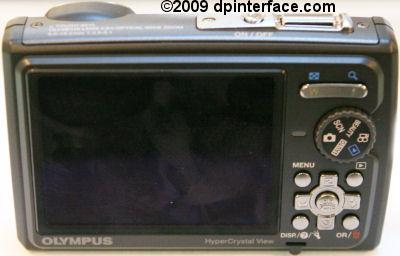
On the back of the Stylus Tough 6010 is its 2.7 inch Hyper Crystal 3 LCD. Olympus claims better screen visibility with their new “Hyper Crystal 3” LCD and so far, their claim seems to be true since the display here was nicely viewable in both low-light and bright light. Oh, the screen has 230,000 pixels and is fairly sharp too.
All of the camera’s controls are located to the right of its LCD. From top to bottom, there’s the zoom controller, mode dial and a cluster of buttons. The mode dial hasn’t changed from the Stylus Tough 6000 and the same options still remain:
- Program mode
- Scene mode
- Beauty mode
- Movie mode
- Playback mode
- Intelligent Auto mode

The Olympus Stylus Tough 6010 aka Mju Tough 6010 features the same two modes that were first introduced on cameras earlier this year. Intelligent Auto detects the scene you’re shooting and automatically picks one of five scene modes for you (Portrait, landscape, night portrait, macro, sport) while Beauty mode removes blemishes in your people photos and makes their skin look better.
Below the mode dial is the navigation pad which has four buttons surrounding it. I’ve already ranted enough in this review (and the previous one on the Stylus 6000) so let’s get right to the respective functions of the D-pad buttons:
- Up – Exposure compensation (+/-2 exposure in 1/3 step increments)
- Down – Self-timer (Off, on - 12 seconds)
- Left – Macro (Off, normal macro, super macro)
- Right - Flash setting (Auto, auto with redeye reduction, on, off)
- Center – Function menu/Set
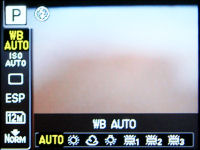
The function menu on the camera is brought up by pressing the center button on the navigation pad:
- White balance (Auto, daylight, cloudy, tungsten, fluorescent 1,2 & 3)
- ISO sensitivity (Auto, high auto, 64, 100, 200, 400, 800, 1600)
- Drive mode (Single-shot, normal burst, high-speed burst)
- Metering method (ESP, spot, face detection)
- Image size and compression
The four buttons around navigation pad are the MENU, Playback, DISPLAY and OR buttons. The DISPLAY button toggles the LCD’s on-screen information display; hold the button down and it will activate the camera’s LED illuminator on the front. It also brings up help tooltips about shooting functions in the menu system.
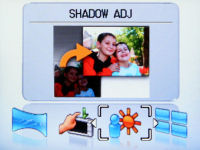
The “Olympus Recommended” button allows you to quickly access panorama shooting, toggle Tap Control, Shadow Adjustment and Perfect Shot Preview. Here’s what the latter three functions do:
- Panorama shooting – in-camera stitching mode allows you to take up to three pictures while computer stitching mode allows you to line up a maximum of ten photos
- Shadow Adjustment – adjusts picture contrast to brighten dark parts of your photos
- Perfect Shot Preview - splits the screen into 4 parts that allow you to “preview” the different effects of settings all at once
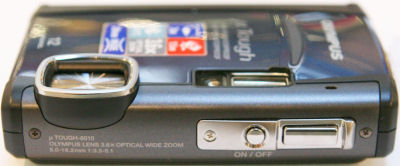
Up here, you’ll find the Stylus Tough 6010’s power button and shutter button.
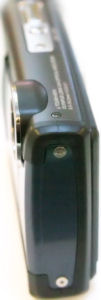
Nothing to see here. On the other side of the camera, you’ll find a wrist strap loop, speaker and a single connector port used for both USB and A/V out connectivity.
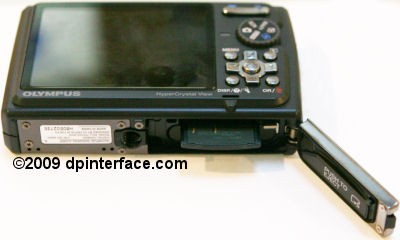
And lastly, there’s the tripod mount and battery/memory card compartment over here at the bottom of the Stylus Tough 6010. You won’t be able to swap memory cards here because of the tripod mount location.
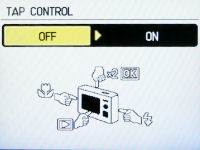
The Stylus Tough 6010, like other rugged cameras by Olympus, has Tap Control which allows you to perform certain functions just by tapping the sides of the camera:
- Double tap top – OK/Select
- Tap left side – Macro setting
- Tap right side – Flash setting
- Tap back surface – Enter playback mode
Tap Control works very well, though I wish Olympus allowed customization of the ‘tap’ functions according to every user’s preference.
Taking pictures (Shooting mode)
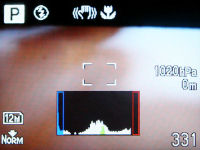

The Olympus Stylus Tough 6010 aka Mju Tough 6010 displays a lot of information on-screen – including exposure and shooting details, live histogram, 3 X 3 gridlines as well as atmospheric pressure and altitude. Only a battery indicator is missing here.
The image resolution options available on the Stylus Tough 6010 are 12 MP, 5 MP, 3 MP, 2 MP (normal and widescreen), 1 MP and VGA; along with two image compression options; Fine and Normal.

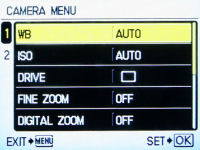
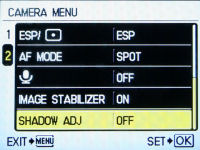
Being 90% the same camera, it’s not surprising the Olympus Stylus Tough 6010 shares the exact same menu system and items as its 10 megapixel sibling:
- White balance, ISO, drive and metering mode – I’ve talked about these when discussing the Function menu
- Fine zoom and digital zoom – Digital zoom lowers image quality as usual by using digital magnification while fine zoom crops your pictures instead
- AF mode – iESP (multiple point), spot, face detection/li>
- Sound memo (On/off)
- Sensor-shift image stabilization (On/off)
- Shadow Adjustment (On/off)
The Olympus Stylus Tough 6010 has two macro modes. Normal macro mode allows you to go as close as 10 cm to a subject at wide-angle and 30 cm at telephoto. Super macro is much better as it lowers minimum focusing distance down to 2 cm, though the lens is fixed at wide-angle in this mode.
The Olympus Stylus Tough 6010 has no manual controls, only a bunch of scene modes which include portrait, landscape, landscape + portrait, night scene, night + portrait, sport, indoor, candle, self portrait, sunset, fireworks, cuisine, documents, beach and snow, pre-capture movie, underwater snapshot and underwater wide 1 & 2 and underwater macro.
The camera has a face detection system that can find up to 16 faces in a frame. Oddly, however, the camera seems to lack the smile detection feature found on the Stylus 6000.
Magic Filters
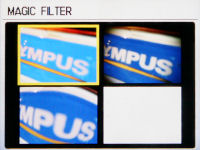
The Stylus Tough 6010 is the first Olympus compact camera to have Magic Filters, a feature derived from the Art Filters found on Olympus digital SLRs. Magic Filters are essentially creative effects you can apply to your photos right from the camera (you can also do the same in Photoshop, but it’s more tedious). Let’s have a look now at the four Magic Filters available on the Stylus Tough 6010:
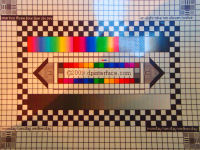
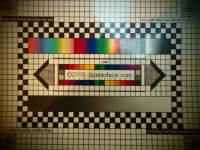
Pop Art intentionally increases saturation and makes photos look slightly warmer while Pinhole simulates the effect of photos taken by a pinhole camera by adding excessive vignetting (dark corners) to pictures.

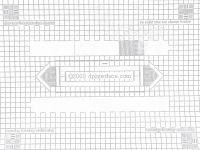
The fisheye and sketch effects here are both pretty self-explanatory. The first three Magic Filters can be used at full 12 megapixels except Sketch, where resolution is lowered to 3 megapixels.
The implementation of Magic Filters isn’t the best – you’ll first have to enter Program mode, adjust all the settings (ie ISO and exposure compensation), enter the Camera Menu and select a Magic Filter before taking a photo. Pressing any button on the back while using a Magic Filter will automatically return you to normal mode, which is annoying when you want to adjust a setting or bump one of the buttons by accident.
Video Recording

The Olympus Stylus Tough 6010 has a standard-issue VGA movie mode which should be fine for most people. You can record VGA (640 x 480) movies with sound at 30 FPS – the catch here is you MUST use an xD-Picture card, otherwise, you’re forced to stick with other settings (either by reducing frame rate to 15 FPS, lowering resolution to QVGA (320 x 240) or both).
Exposure is automatically adjusted as expected, but you cannot use optical zoom while recording a movie. Overall movie quality was just average.
Performance
All performance testing of the Olympus Stylus Tough 6010 was performed using a 1 GB Olympus xD-Picture card.
The Olympus Stylus Tough 6010 aka OIympus Mju Tough 6010 starts up in a speedy 1.4 seconds. Focusing was just so-so with speeds of 0.2 to 0.4 seconds in good light but going over 1 second in low-light. Turning on the LED illuminator on the front will certainly help in low-light focusing since the Stylus Tough 6010 lacks a real AF-assist lamp (which is more effective, by the way).
- Shot-to-shot speed - 1 shot every 1.9 seconds, about average
- Flash recharge time using a fully charged battery - 4 seconds on average
The Olympus Stylus Tough 6010 has a full-resolution continuous shooting mode that allows you to snap at 1 frame per second (on par with other 12 MP cameras and faster than the Stylus 6000). The high-speed burst mode remains the same, however, shooting at a speed of 5 frames per second while lowering resolution to 3 megapixels.
The camera moves its 3.6X zoom lens from wide-angle to telephoto in under 2 seconds. Shut down time was instant since the Stylus Tough 6010 has no lens to retract.
While focusing performance here remains as unimpressive as the old Stylus 6000, I’m surprised that the Stylus Tough 6010 has better shot-to-shot speeds and writes slightly faster, despite the increase in file sizes. Yup, I’m almost certain that Olympus learnt their lesson and stuffed the Stylus 8000’s processor into this camera, hence the slight boost in performance.
Image Quality
Moving on, we’ll be taking a look at the Olympus Stylus Tough 6010 aka Mju Tough 6010’s image quality:






The Olympus Stylus Tough 6010 starts out with clean but soft looking pictures at ISO 64 and 100. Noise goes up slightly at ISO 200 (though pictures are still fairly smooth) and becomes more visible at ISO 400. I’d say you could produce medium to large prints at this point in time.
Going up to ISO 800, there’s a drop in color saturation and more noise speckles. You could probably make a 4 x 6 print out of this or put photos in your digital photo frame, but for anything larger, you’ll notice noise meddling with your photo showcase. ISO 1600 is really horrible and I would advise keeping away from using it.


It’s not too difficult to tell here that the Olympus Stylus Tough 6010 produces cleaner looking but softer images with more noise reduction compared to the Stylus Tough 6000. You’ll probably notice the difference if you were making posters, but for prints up to letter/A4 size, the amount of noticeable difference are small.


Here, you’ll see the two different approaches of the two cameras towards processing their respective images. The 10 megapixel Stylus Tough 6000 produced rather ‘grainy’ looking photos but with more detail preserved, while the 12 megapixel Stylus Tough 6010 reviewed here jumps straight to slapping on some noise reduction which makes images apparently cleaner but softer with less details preserved.


The same applies here to the ISO 800 crops, except the Stylus Tough 6000 preserves more saturation this time.

I noticed mild levels of lens distortion and some edge softness with the Stylus Tough 6010’s lens. In contrast, however, chromatic aberration (color fringing) levels were quite low and the camera easily identified and removed redeye in people photos.
Overall image quality here was just average. There was an observed drop in image sharpness and detail levels compared to the camera’s 10 megapixel sibling, but pictures looked slightly cleaner out-of-the-camera thanks to built-in noise reduction. If you’re getting the camera just to take simple snapshots, then the Olympus Stylus Tough 6010 should be satisfactory – but there are definitely some other rugged cameras that take better quality photos.
Photo gallery
Have a look at full-sized photos in the Olympus Stylus Tough 6010 aka Mju Tough 6010 photo gallery!
Playback
*Playback screenshots taken from Olympus Stylus Tough 6000 review
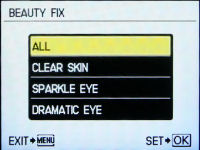
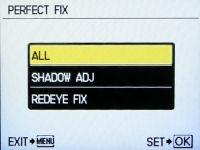
The Olympus Stylus Tough 6010 has a very good playback mode. The usual basics are all here: print marking, slideshow, voice clip attachment, image cropping, resizing and rotation. Photos can be magnified by 10X so you can inspect the little details in them.
Pictures can be played back as individual photos, by date in calendar view or in sets of 4, 9, 16 or 25 thumbnails. The camera also has a few editing functions, which include redeye removal , Shadow Adjustment edit, saturation adjustment and the option to turn your pictures into sepia or black and white ones.
And just in case you forgot to use Beauty Mode when taking your picture, there’s a Beauty Fix tool in playback. You can apply things like Clear Skin (removes blemishes and such), Sparkle Eye, Dramatic Eye or all of the three effects. While your results may vary, depending on the person/portrait’s face, rest assured you’ll get some interesting (and gimmicky) results every time.
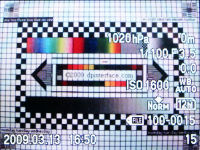
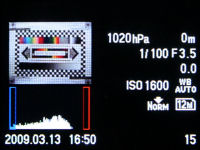
The Olympus Stylus Tough 6010 tells you pretty much everything about your photos: shooting details, exposure information (with shutter speed and aperture value) and a histogram. The camera also shows atmospheric pressure and altitude of the photo taken as well.
Conclusion
Take the Olympus Stylus Tough 6000 from earlier this year, throw in a 12 megapixel sensor, Magic Filters and (presumably) tweak its circuitry, and you’ll get the Olympus Stylus Tough 6010 over here. The Stylus Tough 6010 is an in-between model positioned in the middle of the Stylus Tough 6000 and 8000 models introduced earlier this year.
The Olympus Stylus Tough 6010 inherits all the goodies and features (sans smile detection) from its 10 megapixel sibling. Those features include Tap Control, built-in help screens, plenty of automatic shooting features and playback tools. The camera itself is shockproof, waterproof and freezeproof, and comes with a nicely viewable 2.7 inch screen and handy LED illuminator lamp.
The only new thing in the camera’s feature set is the inclusion of Magic Filters – you can choose from four different effects to use on your photos in shooting mode. As I mentioned in the dedicated section about Magic Filters, implementation wasn’t great as you’ll have to press a lot of buttons if you happen to change your mind about camera settings.
Oh, and speaking of buttons, the Stylus Tough 6010 also has the same, below average ergonomics of the Stylus 6000 (small buttons on the back), along with the lack of manual controls and memory card type restriction if you want to record VGA movies at 30 FPS.
Somehow, Olympus did something to the camera’s processing, and I’m happy to report the Stylus Tough 6010’s performance is better than the Stylus 6000 (surprising, since it needs to handle larger files) and closer to that of the Stylus 8000. That said, the camera’s performance isn’t quite ‘best in class’ or mind-blowing yet.
Image quality just touched the ‘good’ mark here – the camera produced marginally cleaner looking pictures compared to the Stylus 6000, but at the expense of increased noise reduction and worse image sharpness. I was quite put off by the softness, even in the center, when viewing photos at 100% but image quality should be fine for anyone producing 8 x 10 or smaller prints. So the Stylus Tough 6010 actually managed to up its megapixel count while boosting speed slightly and maintaining image quality (somewhat) – not bad I must say, not bad at all.
Bottom line is, the Olympus Stylus Tough 6010 is a decent camera that I can recommend to those wanting a rugged camera which produces acceptable image quality. It might not be the best camera in the world, but if you stick to taking pictures in decent to well lit places and try not to print posters with the camera, you should be one satisfied person.
What’s hot:
- Rugged design: waterproof, shockproof and freezeproof
- LED illuminator is handy for macro/low-light shooting
- Tap Control improves ease of use slightly
- Improved performance from Stylus 6000 (though still not the best)
- Nicely viewable LCD screen
- Intelligent Auto mode, Magic Filters and built-in help tooltips for shooting functions
- Perfect Shot Preview, Shadow Adjustment and playback editing tools
- Good image quality till ISO 400
What’s not:
- No manual controls
- Above average levels of image softness (even in the center)
- Tiny, cluttered buttons on the back
- Movie mode not fantastic, max VGA 30 FPS requires xD-card to be used
- Low-light performance (ie focusing and high ISO) is not fantastic
Recommended Accessories:
- 2 GB xD-Picture or microSD card
Related articles:
- Olympus Stylus Tough 6010 announced
- Olympus Stylus Tough 6010 Photo Gallery
- Olympus announces four mid-summer 2009 cameras
- Olympus rebranding SW cameras as “TOUGH” cameras in 2009
- Olympus Stylus Tough 8000 Photo Gallery














This website uses IntenseDebate comments, but they are not currently loaded because either your browser doesn't support JavaScript, or they didn't load fast enough.